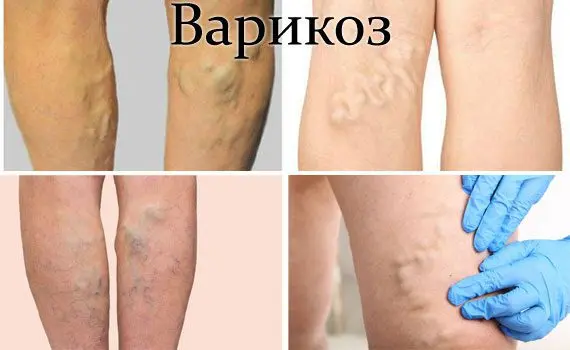What is varicose veins?
Varicose veins are swelling of peripheral veins under the skin, most often on the surface of the muscles of the legs, the veins take on the appearance of swollen and strongly tortuous, bluish in color. At the same time, nodes are formed, and the valve apparatus is destroyed. The outflow of blood in the veins cannot go as standard. When the valve flaps close, problems begin. The blood can’t move the way it’s supposed to – rising up. The veins are under pressure due to stagnation of blood.

When it becomes high, because of it, the blood seems to be pushed out, and its excess stretches the walls of the veins, which initially vary in thickness. Vessels are stretched. Their edges are pressed against the skin and become visible. Because of this, characteristic “cobwebs” (vascular networks) are formed. If the vessel is visible through the layer of the epidermis, it means that it is weakened. The thicker the veins, the more noticeable their blue color. Nodules are created that are clearly visible on the legs.
According to statistics, 18–20% of the population suffer from varicose veins, and almost 50% of patients in the initial stage do not even suspect that they are seriously ill. Most often, this disease affects women.
Causes of varicose veins
The causes of varicose veins can be a long standing time, obesity, pregnancy, long wearing stockings or socks with tight elastic bands, as well as congenital weakness of the connective tissue. The above refers to the primary causes of the development of the disease.
Varicose veins are formed when the blood flow through the veins is wrong. Scientists have investigated the causes of this disease, which is not inherent in other living species to the extent that humans suffer from it.

Among the established causes of varicose veins are:
Upright walking. Researchers attribute lower extremity disease to excessive pressure exerted on them by the body. The column of blood extends to the muscle of the heart. Those who spend a lot of time on their feet are at particular risk.
Genetic predisposition. In most people, this disease turns out to be a factor passed down from their parents. The statistics in this case are very clear – in infants whose parents suffered from such a disease, the probability of getting varicose veins increases to 70%. But such a risk can be avoided if you do not create concomitant factors. Hereditary varicose veins often appear at a very early age.
The nature of the work, the standard way of life. With insufficient mobility, many modern professions have a certain risk. Phlebologists have suggested using the term “computer varicose veins”.
Disorders of the endocrine and hormonal system. Due to the characteristics of the body in women, periods of hormonal disruptions become the causes of blood stagnation. For them, the most dangerous periods are puberty, pregnancy, the time after childbirth. Also dangerous is the time when menopause occurs. This gender category of patients visits doctors 2-3 times more often. In the female organs, there is not enough hormones called estrogens. Instead, the so-called corpus luteum hormone predominates. It is believed that it is he who has a relaxing effect on the muscles. This contributes to the expansion of the veins.
Obstacles in the outflow of blood through the veins. They arise as a purely mechanical formation – a blood clot, uterus, tumor.
Stress and nervous disorders affect the state of blood vessels. In the wall of the veins there are nerve endings that give them elasticity. With an increase in pressure in them, exposure to toxins, alcohol, the lumen of the vessels loses its tone and expands.
Arterial fistulas. They can form due to pressure in the area of the overflow of arterial blood cells.
The so-called muscle pump is located in the calf muscles, and they constantly need to be activated. It is very important to monitor your health, avoiding protracted illnesses – coughing and seizures.
Factors contributing to the development of varicose veins can be overcome by taking care of your health.
[Video] Dr. Berg – what are the true causes of varicose veins and spider veins?









